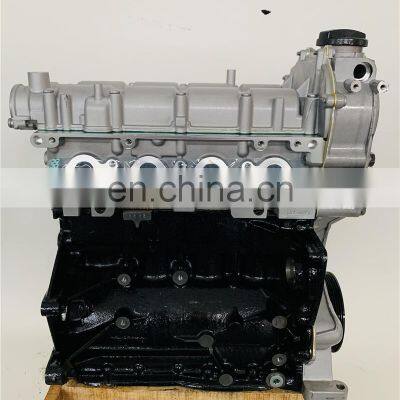Maintain consistent power with a high-performance clp engine.
Wiki Article
Exactly How a Clp Engine Can Improve Performance in Various Industries
The advent of CLP engines notes a substantial shift in operational performance across numerous sectors, driven by their capacity to optimize fuel usage and lessen downtime. Industries such as manufacturing and logistics stand to get significantly from their durable design and constant power outcome, which promise to improve procedures and enhance performance. As organizations progressively focus on sustainability along with efficiency, the function of CLP engines comes to be a lot more crucial. What continues to be to be seen is how these developments will shape the future landscape of commercial operations and their effect on broader economic patterns (clp engine).Introduction of CLP Engines
CLP engines, or Constant Liquid Propellant engines, represent a substantial advancement in propulsion modern technology, specifically for area applications. These engines utilize a continual feed system that permits for the continual expulsion of propellant, resulting in enhanced performance and performance compared to typical strong or hybrid propulsion systems. By maintaining a continuous circulation of fluid propellant, CLP engines can accomplish more specific drive control, which is essential for maneuvering spacecraft in different mission circumstances.The layout of CLP engines integrates innovative materials and innovative gas management systems. clp engine. This causes decreased weight and raised integrity, crucial aspects for long-duration space objectives. Furthermore, the continual operation lessens the risk of burning instability, a common obstacle in traditional rocket engines.

Advantages in Production
The production of Constant Liquid Propellant (CLP) engines provides several notable advantages that boost both performance and cost-effectiveness. Among the main advantages is the streamlined production process, which minimizes the complexity related to typical propulsion systems. By using liquid propellant, makers can achieve higher precision in engine efficiency, resulting in enhanced energy output and decreased waste.Furthermore, CLP engines help with a greater level of modularity, enabling for easier assimilation right into numerous production lines. This flexibility can significantly decrease lead times and boost general operational adaptability. Using CLP technology additionally often tends to decrease the requirement for comprehensive upkeep because of less moving components, which equates right into decreased downtime and operational expenses.

Applications in Logistics
Leveraging Continuous Liquid Propellant (CLP) engines in logistics offers significant advantages in operational efficiency and reliability. These engines provide a durable remedy for different transportation requirements, allowing the seamless movement of items throughout substantial ranges. The intrinsic style of CLP engines permits regular power result, which converts into smoother and much more predictable transport timetables.Among the essential applications of CLP engines in logistics is in sturdy products transport, where they can drive both ground and aerial vehicles. Their capacity to keep high performance under varying lots conditions guarantees that delivery timelines are fulfilled, therefore improving client contentment. In addition, CLP engines can be incorporated into automated logistics systems, helping with real-time monitoring and enhancing route preparation.
In addition, the resilience of CLP engines reduces upkeep downtime, allowing logistics firms to maximize their functional abilities. This is particularly valuable in warehousing operations, where performance in handling and transporting items is vital. As logistics continues to progress, the integration of CLP engines represents a forward-thinking approach that not only boosts performance yet also sustains the industry's expanding demands for integrity and speed.
Effect On Power Performance
How do Continuous Liquid Propellant (CLP) engines enhance energy effectiveness in transport? CLP engines use a constant flow of fluid gas, optimizing burning processes and keeping a stable drive outcome. This design decreases energy losses connected with traditional burning engines, where gas shipment can vary and cause ineffectiveness.The constant operation of CLP engines permits an extra reliable thermal cycle, leading to higher particular impulse compared to standard engines. clp engine. This equates to lowered fuel usage for the same amount of job done, considerably reducing operational expenses throughout different transport industries, consisting of aeronautics and maritime sectors
Furthermore, the ability of CLP engines to preserve ideal performance under differing tons conditions lowers the demand for frequent velocity and deceleration, even more boosting gas performance. Improved energy efficiency not just adds to set you back savings visit our website but also causes lower greenhouse gas exhausts, aligning with worldwide sustainability objectives.
Future Trends and Innovations
Emerging advancements in Continuous Liquid Propellant (CLP) engine innovation guarantee to Read More Here revolutionize the landscape of transportation performance and sustainability. As markets pivot towards greener options, CLP engines stand at the center, incorporating innovative products and design approaches that boost efficiency while minimizing ecological impact.One of the most appealing trends is the fostering of hybrid systems that integrate CLP engines with eco-friendly power sources. This harmony can enhance fuel usage and lower emissions, straightening with global sustainability goals. Improvements in computational liquid characteristics (CFD) are assisting in the design of even more aerodynamically efficient engines, leading to decreased drag and boosted gas effectiveness.
Moreover, the advancement of clever surveillance systems is established to improve operational effectiveness. These systems utilize information analytics and IoT innovation to enhance engine efficiency in real-time, guaranteeing that the engines run within their most efficient specifications.
As research proceeds to check out different propellant solutions-- such as biofuels and artificial fuels-- the future of CLP engines looks encouraging. By using these developments, sectors can not only improve their performance yet additionally add dramatically to a cleaner, much more sustainable future in transportation.
Verdict
In final thought, CLP engines stand for a considerable advancement in efficiency throughout numerous industries. The combination of advanced materials and less moving parts lessens upkeep requirements, while placement with sustainability goals placements CLP engines as a crucial modern technology for the future.Report this wiki page